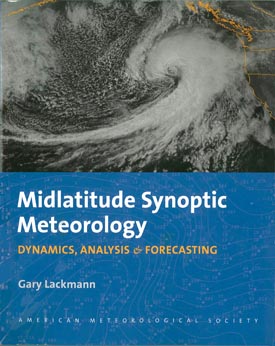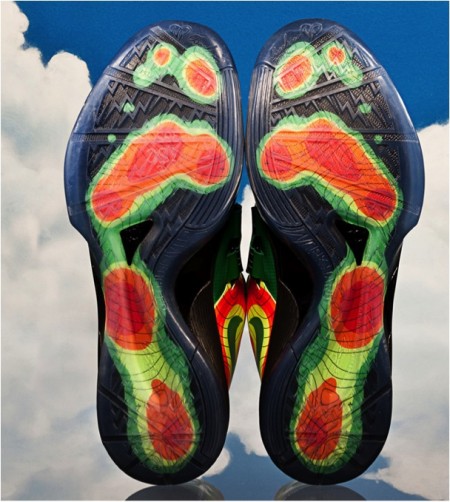At a magnitude of 9.0, the earthquake off the Japanese coast last March was already known as one of the most powerful ever recorded, killing (in large part due to the ensuing tsunami) almost 16,000 people and damaging or destroying more than 125,000 buildings. A recent study (available here; subscription required) now quantifies just how monumental the event was: the seafloor in the Japan Trench northeast of the mainland, where the quake originated, was jolted 50 meters horizontally and 10 meters vertically–movement that was “abnormally, extraordinarily huge,” according to Toshiya Fujiwara of the Japan Agency for Marine-Earth Science and Technology.
Fujiwara led the research that used multibeam bathymetric surveys to measure the depth of the water and contouring of the seafloor. He noted that the research team did not expect to be able to use such equipment to detect the crust movement,which during most earthquakes occurs in scales of millimeters or centimeters. For example, the 2005 Miyagi earthquake, which had a magnitude of 7.2, registered a crustal shift of 10 centimeters at a geodetic station near the Japan Trench. The 2011 earthquake had a shift of 15 meters at the same station. The study also found another vertical shift of at least 4-6 meters of a slab of ocean crust between the Japan Trench and the Japanese coastline, which may have contributed to the pulsating pattern of the tsunami waves that eventually struck the country.
The researchers believe that the fault that caused the quake may extend as far as the axis of the Japan Trench.
“Previously, we thought the displacement stopped somewhere underground,” Fujiwara said, “but this earthquake destroyed the entire plate boundary.”
As we posted previously, a number of presentations at the AMS Annual Meeting in New Orleans will cover the community response to the earthquake and tsunami, including Junichi Ishida of the Japan Meteorological Agency who will discuss the earthquake’s impact, the JMA’s response to it, and lessons learned from the disaster in the keynote address for the 28th Conference on Interactive Information Processing Systems (Monday, 11:00 a.m., Room 356).
Weather Alerts Get More (and More) Mobile
The use of social media as a forecast tool seems to develop as rapidly as the devices themselves. In December, the NWS revealed it will soon be providing customized location-specific alerts through a user’s wireless carrier.
“We’re getting this weather, disaster, and other emergency information into your hand,” says David Green of the NWS. “The new service will use geo-location to target alerts to a person’s whereabouts. The goal is to give people greater insight into what’s going on with the weather so they can make the best decisions about how to respond.”
At the AMS Meeting in New Orleans next month, you can get a look at two more ways mobile devices are being used to aid in forecasts. In “Using Mobile Devices to Display, Overlay, and Animate Meteorological Data and Imagery,” David Santek, CIMSS/University of Wisconsin, and colleagues, will show their custom interfaces for smartphones that offer near real-time weather alerts. For more on the details of their applications and the future plans for it, check out their presentation on Monday, 23 January, at 5:00 p.m. (Room 357).
Marcel Molendijk, of the Royal Netherlands Meteorological Institute, offers up a different use in “iWitness; Damage Assessment of Severe Weather by Mobile (phone) Observations.” Instead of sending weather alerts to cell phone users, Moldendijk and colleagues collected accident damage reports from an Apple iOS application they developed, with information including a description of the event, time and location (GPS-based), and an optional photo. To get more information on the KNMI system and the results collected to date, go to the talk on Tuesday, 24 January at 2:30 p.m. (Room 356).
After the Disasters, How to Be a Holiday-Ready Nation
Weather took hundreds of lives in a record 12 billion-dollar disasters in the United States in 2011. Internationally, the disaster toll is even more startling. Tragedies have been a commonplace. The record-breaking year is a wake up call to the weather and climate community and to the nation as a whole.
Yet, on a holiday eve, a veteran of some of the worst weather of the year shows us how to give thanks. It was at a meeting, “Weather Ready Nation: A Vital Conversation” this month in Norman, Oklahoma, in an emotional presentation by Keith Stammer. If anyone knows what it means to be Weather-Ready, now, it’s Stammer, the emergency manager of Jasper County, Missouri, where basically a third of the city of Joplin was ripped apart by an EF-5 tornado nearly a mile wide. (You can listen to Stammer’s description of the ordeal on-line.) Yet here’s how he started his talk:
The big thing you need to understand about Joplin is that at nighttime it is a city of 50,000 people; in the daytime it’s a city of a quarter of a million. A lot of people come in for shopping, medical, for work. The one thing that translates, into in terms of this particular disaster, was that we are most grateful that it happened on Sunday evening, and not Monday evening, or the totals would have been absolutely different.
That’s a remarkable perspective to take after 162 people died, over a thousand were injured, and nearly 17,000 dwellings were lost. It’s a way to live after a year like 2011.
The discussion about making this country more resilient to the battering and bruising of a violent atmosphere, begun in Norman, will continue at our meeting in New Orleans next month. A Monday lunchtime Town Hall by the same name, organized by the leaders of the Norman conference, will be a highlight (12:15 p.m., Room 238). After Christmas, we’ll report on some of the Weather Ready Nation ideas and comments in The Front Page as preparation for the week’s deliberations.
But before refueling our minds for the Annual Meeting, a holiday is a time to replenish the heart and to experience community, so listen again to Stammer, who ended his talk thanking the 114,677 different people who stepped forward, registered as volunteers, and put in some 697,817 hours of service so far to help Joplin recover (more than a million cubic yards of debris removed so far):
All disasters are local, they start locally; they end locally, they may in fact rise to national prominence somewhere in between as ours did, but in the end, with all due respect, all of you foreigners are going to go away and we’re still left to have to handle it. I think one of the things that helped us here is the fact that everybody was willing and able to look at this as a local effort. I can tell you that we did not have one organization or person that stood up and said, I’m in charge, you’re not, get over it. It was in fact a collaborative effort from the get-go and remains to be so today.
We are honored to celebrate a holiday with folks like that. We will be proud to make a Weather Ready Nation with them, too.
A Siren Song for Top-Down Emergency-Preparedness Thinking?
Those of us of a certain age and place in the American experience talk a lot about the meaning of tornado sirens–how it defined our awakening to the omnipresent threat of severe weather. Such sounds stick with those of us who have made weather our business–Tim Coleman et al. admit this is part of the inspiration for their history of tornado warning dissemination published in the May 2011 BAMS. The role of community sirens is surging again in research following the horrible tornado disasters of 2011, as witnessed by presentations coming up at the AMS Meeting in New Orleans by Stephanie Mullins (Univ. of Alabama-Huntsville) in the Wednesday 25 January afternoon poster session (2:30-4 p.m., Room 252/53), Kimberley Klockow (Univ. of Oklahoma; same room and day, 11:30 a.m. oral presentation), Cedar League (Univ. of Colorado/Colorado Springs) on Tuesday 24 January (2 p.m., Room 243), and others.
But what we forget is that it’s not just weather experts and the weather-obsessed who respond deeply to the sounds of emergency sirens. Witness the public outcry to a suggestion by emergency managers to standardize times of regular siren tests across a county in northern Michigan recently, reported today in the Petoskey News. Officials were intent on cutting back from twice daily soundings that had become a community ritual. The Charlevoix fire chief told his city council
that many people report that “they don’t even hear the noon or 9:30 sirens anymore” — the exact condition the change in procedure is intended to avoid.
Quite probably true. But people hear even when they’re not listening. Thanks to Dr. Klockow for pointing us particularly to this passage in the article:
Many of those favoring leaving the siren soundings in place pointed to the soundings as a hallmark of a small town. Many said they have fond memories of their kids or themselves being called home for the evening by the siren’s sound. Others said if the siren was discontinued they’d feel like they were losing yet another part of what make Charlevoix unique.
New Release: Midlatitude Synoptic Meteorology
The newest title from AMS Books is now available: Midlatitude Synoptic Meteorology: Dynamics, Analysis & Forecasting, by Gary Lackmann of North Carolina State University,  links theoretical concepts to modern technology and facilitates the meaningful application of concepts, theories, and techniques using real data. It is aimed at those planning careers in meteorological research and weather prediction, and it provides a template for the application of modern technology in the classroom. Among the topics it covers in depth are extratropical cyclones and fronts, topographically trapped flows, weather forecasting, and numerical weather prediction. The book is generously illustrated and contains study questions and problems at the end of each chapter.
links theoretical concepts to modern technology and facilitates the meaningful application of concepts, theories, and techniques using real data. It is aimed at those planning careers in meteorological research and weather prediction, and it provides a template for the application of modern technology in the classroom. Among the topics it covers in depth are extratropical cyclones and fronts, topographically trapped flows, weather forecasting, and numerical weather prediction. The book is generously illustrated and contains study questions and problems at the end of each chapter.
Midlatitude Synoptic Meteorology–as well as other AMS publications and merchandise–can be purchased from the AMS bookstore.
Plane Has Combative Attitude toward Storms
Technological advancements don’t always involve brand-new applications; sometimes, progress can be made when older technology is utilized in new ways. Such is the case with aircraft used for scientific research. “Experienced” military aircraft have proven to be effective for many types of atmospheric studies, and with the news (subscription required) that a powerful combat plane used by the military for many years is to be reconfigured and given a new assignment, many are looking forward to even greater research capabilities. Originally developed in the 1970s, the Fairchild Republic A-10 Thunderbolt II, better known as the “Warthog” or just “Hog,” is a twin-engine jet designed for close air support of ground forces. Now it’s being prepared to take on powerful storms.
For many years, the military plane of choice for research inside thunderstorms was the T-28. But as early as 1985, scientists recognized that this aircraft lacked the altitude reach, endurance, and payload capacity to adequately address many of their questions. After a number of workshops to study other options, the A-10 Thunderbolt was identified as a prime candidate to become the Next Generation Storm-Penetrating Aircraft. A subsequent engineering evaluation confirmed the scientists’ view of the A-10 Thunderbolt, but the U.S. Air Force was resistant to authorizing the jet for civilian use. With the advent of the Center for Interdisciplinary Remotely Piloted Aircraft Studies (CIRPAS), a research center at the Naval Postgraduate School in Monterey, California, an opportunity opened to put an A-10 Thunderbolt into service of the civilian science community. In 2010, the U.S. Air Force agreed to transfer an A-10 Thunderbolt out of mothballs to the U.S. Navy and, with funding from the National Science Foundation (NSF), and let CIRPAS (on behalf of the Naval Postgraduate School) operate it as it has operated a Twin Otter and other aircraft for the last 15 years. CIRPAS aircraft are equipped with basic meteorological, cloud, and aerosol sensors, and have ample capacity for additional instrumentation that collaborators from other universities or national laboratories may wish to use.

The A-10 Thunderbolt must be completely reassembled to be prepared for atmospheric research. A main part of this effort is wing replacement, but other activity includes evaluation of reinforcement and engine protection needs. The jet will also have its nose-mounted, 30-millimeter cannon removed, opening up more space for scientific instruments. The aircraft is scheduled to be ready for flight in the fall of 2012 and for flying actual scientific missions by mid-2013.
So other than its name, what makes the A-10 Thunderbolt so qualified to fly into storms? Perhaps most importantly, its heavy armor, designed and built to withstand machine-gun and cannon fire. Most planes avoid cumulonimbus clouds and thunderstorms because the hazards that may be encountered inside such clouds–such as severe turbulence, severe icing, lightning, and hail–can be fatal. Encountering hail is particularly dangerous, as striking golf-ball-size hail at 200 mph can smash windshields and damage the airframe and engines. But the A-10 Thunderbolt is rugged enough to deal with such conditions. As Brad Smull of the NSF’s Division of Atmospheric and Geospace Sciences noted, “It turns out that being able to survive wartime flak has a lot in common with being able to handle a strong storm.”
Also valuable are the A-10 Thunderbolt’s flight capabilities. Much is still unknown about cumulonimbus and thunderstorms, and the A-10 Thunderbolt has the potential to reach parts of storms that were previously off-limits. While the T-28’s maximum flying altitude is about 4.5 miles (7 kilometers), the A-10 Thunderbolt can fly at altitudes of up to almost 7 miles (11 kilometers)–high enough to reach the icy heights of thunderheads and gather data on hail formation. It also has the ability to stay in storms for up to 3 hours, compared to about 1 hour for the T-28, and because the A-10 Thunderbolt flies relatively slowly–about 342 mph (550 kilometers per hour)–the data it collects should be of particularly high quality. It can also fly lower than the T-28, making it ideal for air-sea interaction studies, and its heavy payload will support lidar, radar, and other imaging systems.
Ultimately, the versatility of the A-10 Thunderbolt may prove to be its most attractive trait. For example, it might help meteorologists understand what governs the evolution of a storm and its eventual severity; atmospheric chemists study how storms generate chemical species, transport material through the depth of the troposphere, and modify them in the process; atmospheric physicists investigate how clouds become electrified and how electrification may feed back to influence the microphysics and dynamics of storms; and scientists who observe storms using remote sensors (radars, lidars, satellite radiometers) and who try to predict storm evolution by use of models gather in-situ measurements to validate their observations.
[Portions of this post contributed by Haf Jonsson of the Naval Postgraduate School]
A Slam-Dunk Choice for a Gift This Season
Admit it, you want them for the Holidays. Mike Smith already confessed as much on his blog, Meteorological Musings.
They’re NBA star Kevin Durant’s line of Nike basketball shoes, called the “Weatherman”, replete with temperature shadings, isobars, and, on the tread…radar scans of precipitation. We’ll count the number of pairs we see when we’re together in New Orleans.


Durant of course plays for the Oklahoma City Thunder. But  an even better–indeed a slam-dunk–choice for a holiday gift is recommended by Cliff Mass: the Washington Weather Calendar, co-produced by Q-13 Fox News in Seattle and the AMS Student Chapter at the Univ. of Washington. For $13.99 plus shipping you can soothe your meteorological soul, if not your sole.
an even better–indeed a slam-dunk–choice for a holiday gift is recommended by Cliff Mass: the Washington Weather Calendar, co-produced by Q-13 Fox News in Seattle and the AMS Student Chapter at the Univ. of Washington. For $13.99 plus shipping you can soothe your meteorological soul, if not your sole.
iPhone Game Puts Satellite Data in Your Hands
The Los Angeles Times compares it to Tetris and calls it “the nerdiest game ever“. As far as we’re concerned, that’s a sure-fire journalistic badge of honor for Satellite Insight, the new iPhone game app from NASA and NOAA.
The object of the new game is to control real-time Earth and space weather data. Colored blocks falling into columns on a grid represent small pieces of data. To save lives and protect expensive instruments, the GOES-R weather satellite must not lose any data. Players bundle like data types together before the grid overflows. Data blocks fall slowly at first, but arrive faster as the game continues. Each speed-up also brings a power-up tool you can use at any time to help clear the grid. Keep it going as long as you can and try to beat your best time. Explains NASA’s web site:
No matter how thirsty you are, it’s not easy to drink from a fire hose. But that’s similar to the challenge of capturing and storing the huge blast of images and information that the new GOES-R weather satellite will gather.
And of course, as a NASA and NOAA product, the game has an educational mission too–the instructions include information about the upcoming real-life GOES-R satellite.
Satellite Insight is available free for iPhone and other iOS devices on iTunes. Check it out here.
The Services Response to the Tōhoku Disaster a Focus of the 2012 AMS Meeting
The science ministry in Japan reported last week that more than 30,000 square km–eight percent of the country–is contaminated by radioactive caesium from the Fukushima nuclear plant disaster that stemmed from the Tohoku earthquake and tsunami in March. The radiation was washed out of the skies by rain and snow. As much as four-fifths of the caesium ended up in the ocean–much of it having blown northeastward toward Alaska–and currents carried it to the U.S. coastal waters within a week of reactor releases. By one week later some of the micron-sized particles had traveled around the world.
Because the geophysical dimensions of the earthquake-tsunami-meltdown last March are evident in so many ways, so are the demands it placed on scientific services–from the warnings of giant waves to forecasts of tainted precipitation and groundwater to modeling global ocean currents. Not surprisingly, the disaster literally redefined the job of the Japanese Meteorological Agency.
On the first day of full sessions at the upcoming 2012 AMS Annual Meeting in New Orleans, the epic Tōhoku cataclysm will be discussed from numerous angles, particularly the premium it put on enhanced operational response. “The earthquake and tsunami increased vulnerabilities to meteorological disasters such as sediment disasters, flood, and inundations, in the affected area, by shaking and loosening the soils and damaging the embankments and drainage facilities,” notes JMA’s Junichi Ishida.
Ishida’s presentation is the special keynote address of the Interactive Information Processing Systems (IIPS) conference (11 a.m. Monday, 23 January, Room 356). Ishida will talk about how JMA took increased vulnerabilities into account, by
- changing criteria for heavy rain warnings to account for runoff and landslide vulnerabilties
- lowering criteria for coastal inundation warnings (the earthquake actually lowered coastal ground levels, changing tidal configurations)
- introduced extreme temperature warnings to account for reduced electricity capacity
- enhanced aviation support (in particular due to traffic for relief flights) because of flight dangers including radioactive clouds

At the same time (11 a.m. Monday, in Room 338) Yukio Masumoto of the Japan Agency for Marine-Earth Science and Technology will kick off a session devoted to the March 2011 disaster as part of the Coastal Environment symposium. Masumoto will speak about ocean dispersion of radioactive Caesium-137 and Iodine-131 after the Fukushima releases, including relationships with tides, surface winds and, in one case study, atmospheric fallout. In his abstract, Masumoto reports, “In the near-shore region, the wind forcing is a dominant factor that controls the flow field, while large-scale currents and eddies advect the radionuclides in the off-shore region.”
Several other Monday morning presentations in the Coastal Environment session feature rapid American responses last spring to adapt and construct viable modeling systems to depict Japan’s waterborne radiation hazards–speakers include Ronald Meris of the Defense Threat Reduction Agency, William Samuels of Science Applications International Corp (SAIC), and Matthew Ward of Applied Science Associates.
After lunch, in the same session (2 p.m., Room 338) Gayle Sugiyama of Lawrence Livermore National Laboratory will talk about how the U.S. Department of Energy’s National Atmospheric Release Advisory Center provided analyses and predictions of the radioactive plume, estimating the exposure in both Japan and the United States. Guido Cervone of George Mason University (2:15 p.m., Room 338) will show how dispersion modeling helped reconstruct the otherwise unknown sequence of radioactive releases at the Fukushima nuclear plant. Masayuki Takigawa (1:45 p.m., Room 338) will discuss results from regional transport modeling of the radioactivity dispersion on land and ocean, while Teddy R. Holt of the U.S. Naval Research Laboratory will show passive tracer modeling capabilities with the Fukushima events in a coupled ocean-atmosphere mesoscale modeling system (1:30 p.m., Room 338).
In a parallel session of the Coastal Environment Conference next door (1:45 p.m., Room 337) Nathan Becker of NOAA/NWS will discuss calculations of detection times for various configurations of the sensors for the Pacific tsunami warning system, concluding that, “for global tsunami hazard mitigation the installation of about 100 additional carefully-selected coastal sea-level gauges could greatly improve the speed of tsunami detection and characterization.”
Interestingly, Monday’s Space Weather posters (2:30 p.m.-4 p.m., Hall E) include a presentation by Tak Cheung of the ionospheric disruptions caused by the great Japanese earthquake last March. Forecasts of ionospheric disturbances affect yet another service in the wake of the disaster: the communications provided by shortwave radio operators. And that will be a topic for Kent Tobiska (Utah State Univ.) in the Space Weather session at 5 p.m. (Room 252/253
What Does Climate Sound Like?
Paul Miller is a musician, artist, and author better known by his performing name, DJ Spooky. His most recent project, called Terra Nova, is an artistic interpretation of climate and climate change based on both science and his own imagination. The project grew out of Spooky’s visits to both the Arctic and Antarctica, which inspired him to share his vision of climate change through music, words, and pictures. His recently released Book of Ice combines photographs, his own artwork, and commentary on the relationship between art, science, and humanity, with a focus on Antarctica.
But Spooky is best known as a musician, and he has recently toured with a small ensemble of instrumentalists to perform music that he says is intended to make people think and talk about the environment and, specifically, climate change. The pieces for Terra Nova are unique blends of science and art; in some, he uses the music to interpret scientific data (such as the long-held idea that every snowflake has unique qualities). Combining orchestral arrangements with his own electronic contributions, the music creates what Spooky calls “acoustic portraits of the landscape.” His live shows are accompanied by background images related to climate, ice, Antarctica, and similar themes; there have also been postperformance discussions of climate and environmental issues.
A snippet of the sonic portion of Terra Nova can be seen in the video below. A full presentation of his piece titled “Sinfonia Antarctica,” performed earlier this year in Savannah, Georgia, can be found here.
DJ Spooky’s Sinfonia Antarctica is not the first musical extravaganza with that title. The English composer Ralph Vaughan Williams reworked his score for the 1948 movie, “Scott of the Antarctic” into a sprawling, five-movement work for orchestra (including wind machine in the percussion) and called it his Symphony No. 7, “Sinfonia Antarctica.” You can listen to it here and decide what advantages Spooky had by virtue of visiting the Antarctica in person. (In 2000, after a trip to Antarctica, British composer Sir Peter Maxwell Davies wrote his 8th symphony, nicknamed “Antarctic”; like DJ Spooky’s music, the Maxwell Davies symphony is more an abstract depiction of the loneliness and desolation of an icy expanse than the lush, dramatic Vaughan Williams symphony.)
There’s a long history of music depicting climate and specific atmospheric phenomena. Karen Aplin and Paul Williams made a methodical study of some famous classical orchestral works depicting weather and climate (including Vaughan Williams’ “Sinfonia Antartica”) in the November issue of Weather magazine (published by the Royal Meteorological Society in the U.K.). A press release about the article says that British composers are “twice as likely to have written music about climate themes” than composers from elsewhere. However, a closer examination of the article shows a limited sample size precludes such conclusions. What is interesting, though, is that Aplin and Williams take a highly analytic approach to the topic, which might eventually lead to interesting conclusions about musical methods (instrumentation, keys, etc.) or relations between composers’ nationalities and the type of weather that interests them.
Meanwhile, music has moved in radically different directions than, say, Vivaldi’s violin concerti about “The Four Seasons.” The technology and world-awareness exploited by DJ Spooky and his musical/video performance concoctions are just one avenue. For example, composer Nathalie Miebach, has lately been turning actual meteorological data into sound–and sculpture made of woven reeds. She recently took numerical observations–temperature, humidity, pressure, and so forth from 2007’s Hurricane Noel and charted them graphically, then translated the chart into musical notation. The sculpture then depicts the charts three dimensionally. Miebach says:
I think there are a lot of us out there who need the kinesthetic, who need the touch to understand something. By bringing the complexity of meteorology back into the physical space, either through touch or through sound, I’m trying to find alternative venues or access points into that complexity….I am getting more interested in using data as a literary tool, to tell a story
Just as technology has allowed us to experience and visualize the atmosphere, so too it has allowed us to see–and hear–it differently.